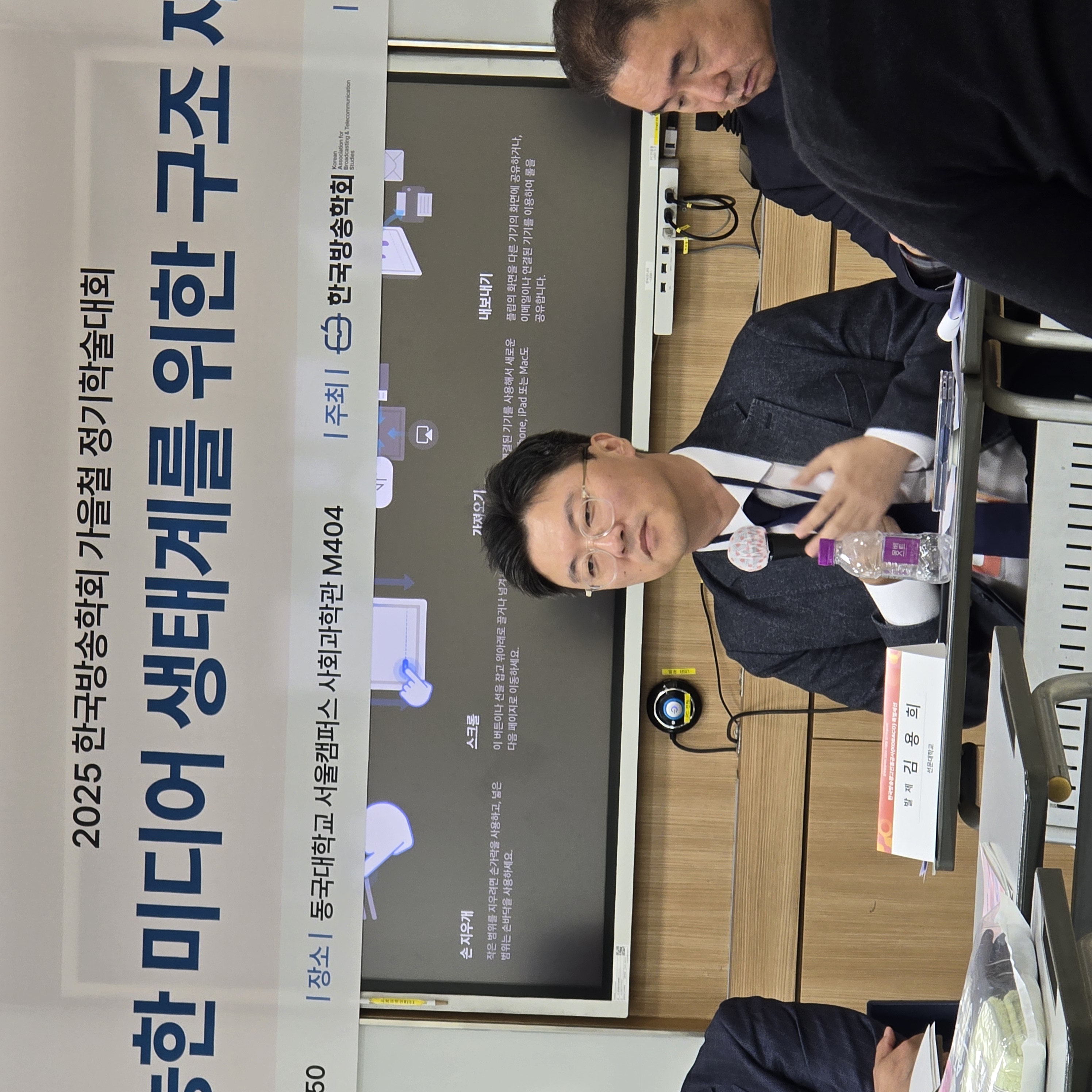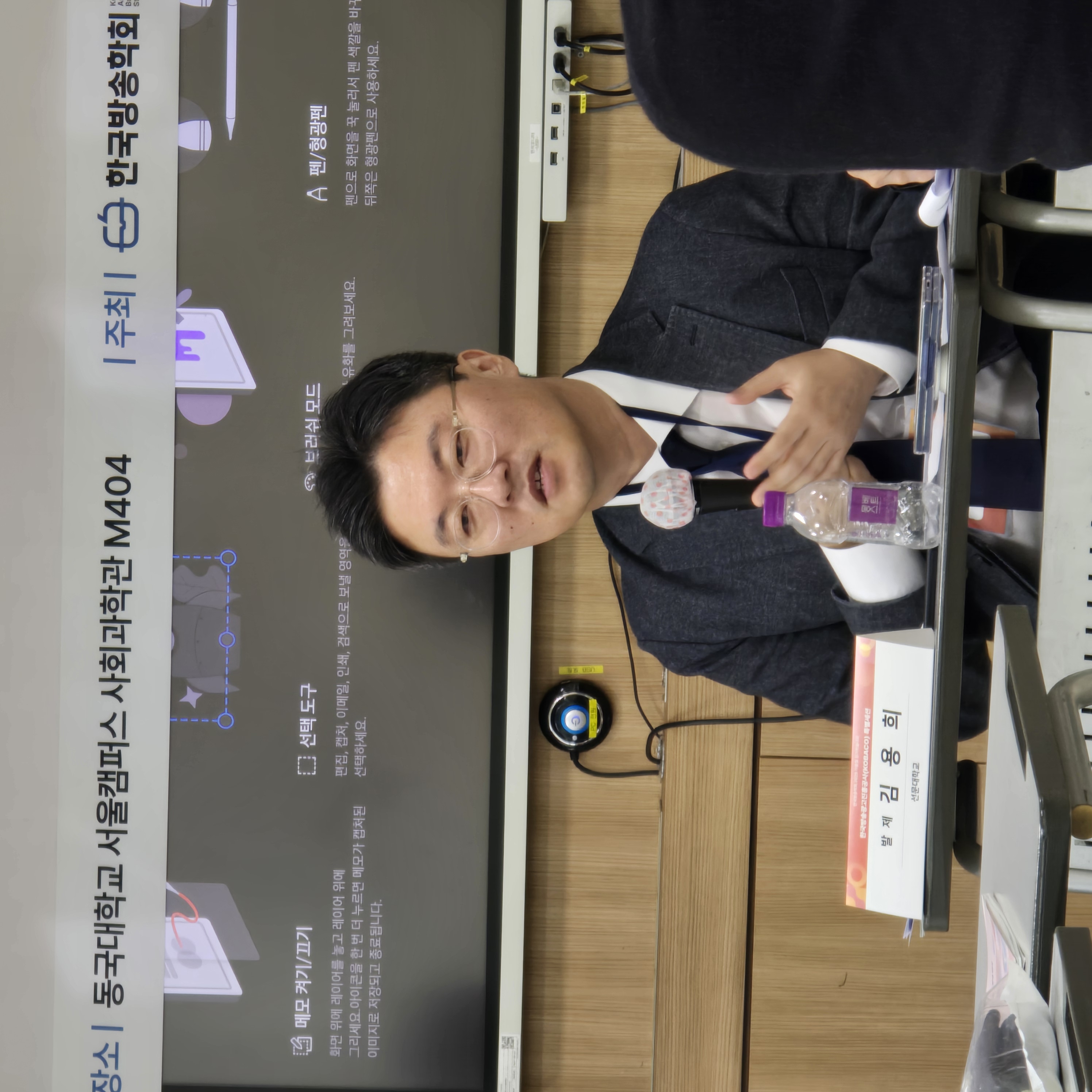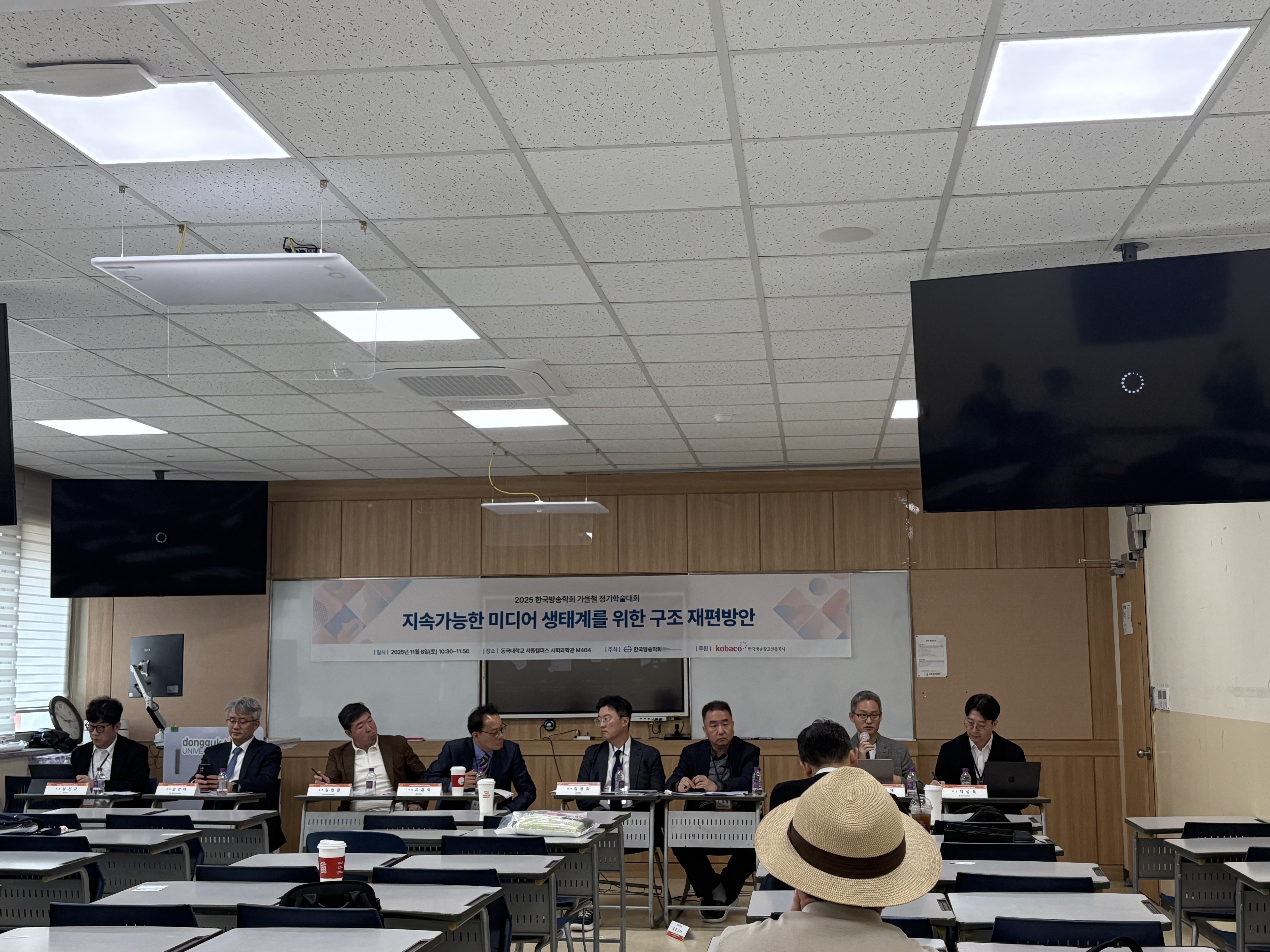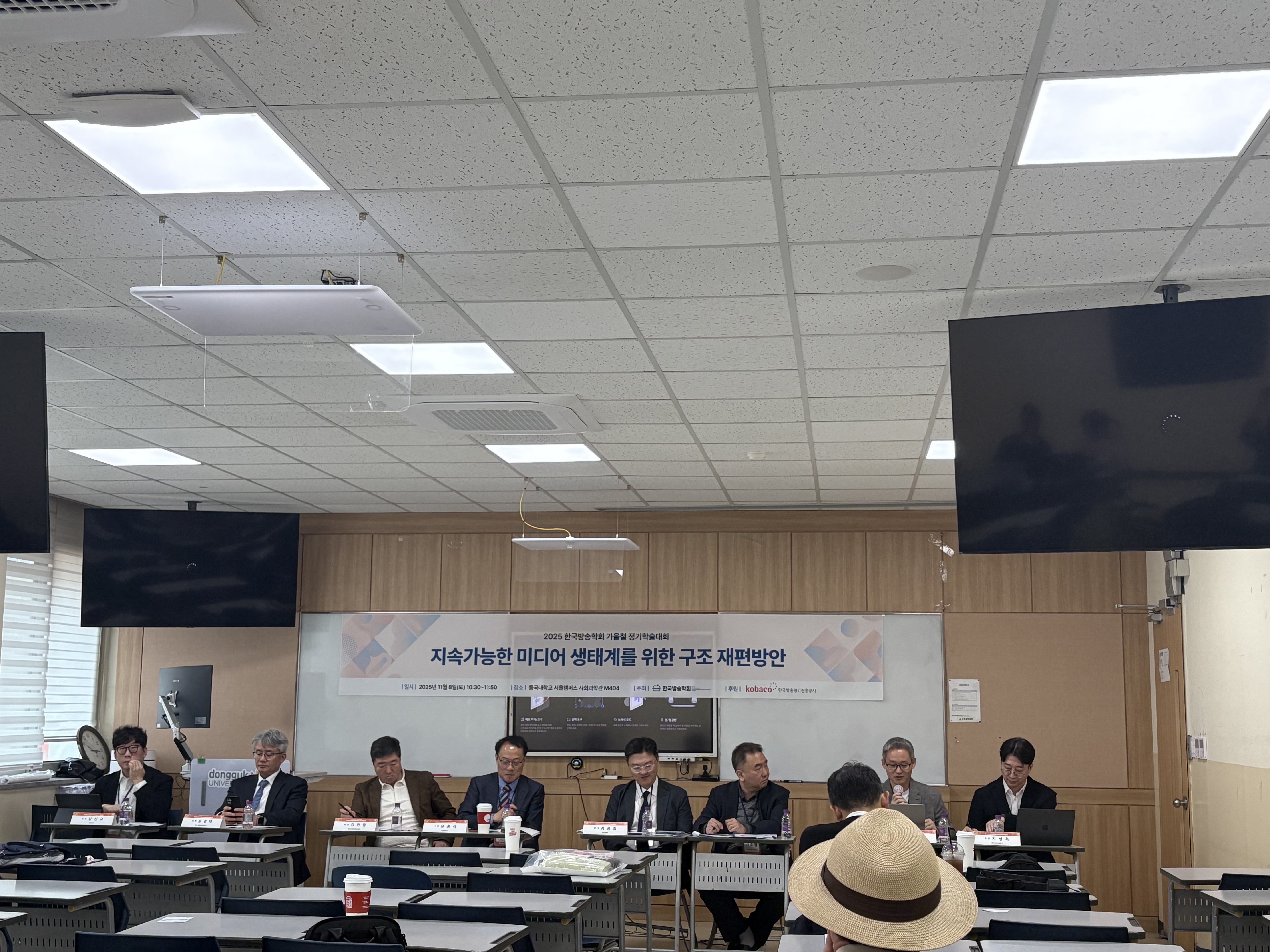
KABTS Conference Presentation: Media Financing, Digital Inequality, and the Future of OTT Markets
On November 8th, I had the privilege of participating in the Korean Association for Broadcasting & Telecommunication Studies (KABTS) Fall Conference, where I presented three research studies addressing critical issues facing Korea’s media industry. It was a deeply meaningful opportunity to engage in substantive discussions with academic colleagues and industry practitioners.
I’d like to share the key findings and implications from my presentations.
1. Sustainable Media Ecosystem Financing (KOBACO Session)

In the KOBACO session, I presented on “Restructuring Government Financing for a Sustainable Media Ecosystem.” Despite nominal revenue growth of 18.9% over the past decade, Korea’s media industry faces a stark reality: real revenue inflow has stagnated at just 0.1%a classic case of “nominal growth illusion.”

The structural collapse of broadcast advertising revenue (-43.5%) and the 44-year freeze on public broadcasting license fees have depleted the industry’s capacity for reinvestment. My presentation highlighted how these policy failures have intensified the industry crisis and proposed a concrete policy roadmap including:
- Normalizing KBS license fees
- Immediate deregulation of broadcast advertising restrictions
- Easing platform operators’ contributions to the Broadcasting Development Fund

The Q&A session was particularly engaging, with insightful questions from KOBACO representatives and industry stakeholders about implementation strategies and regulatory challenges.
2. Korea-US OTT Switching Behavior Analysis
Second, I shared research on “Analyzing OTT Switching Behavior Across Korea-US Markets” (co-authored with Daekyu Kim). To understand the mechanisms driving consumer migration from pay-TV to OTT, we applied the Push-Pull-Mooring framework combined with four methodologies: SEM, NCA, fsQCA, and Causal ML.
A key finding: “pull” factors (attractiveness of alternative OTT services) are 4.35 times more powerful than “push” factors (dissatisfaction with existing services) in driving switching intentions. Notably, unlike the US market’s high-cost structure, Korea’s entrenched ultra-low-cost pay-TV pricing means that cost (push) is not a driverinstead, content attractiveness (pull) emerges as the sole and critical determinant of switching behavior.
3. Digital Inequality of Time: Quality Gaps in Usage
Finally, through my research on “Digital Inequality of Time,” I examined the underside of digital transformation. Analyzing longitudinal data from the Korea Media Panel (2019-2024), I found that while first-generation digital divides (device access) have essentially been resolved across income strata, stark differences persist in “quality of use” (third-generation divide).
Lower-income groups spend more total time on media (a “time paradox”), but dedicate 88% of that time to entertainment. In contrast, higher-income groups allocate 35% of their media time to “productive activities” such as news consumption, information search, and learning. This qualitative gap in time usage (productivity index: 5.3% vs 34.5%) translates into differences in human capital accumulation, ultimately operating as a new mechanism of social stratification.
Dialogue and Future Directions
The sessions across all three topics were particularly engaging. Sharp questions from academics and industry professionals led to in-depth discussions on media financing challenges, competitive market dynamics, and digital inclusion.
This conference reaffirmed the complex, multifaceted challenges confronting the media environment and deepened my sense of responsibility as a researcher. I remain committed to providing practical policy alternatives for our rapidly evolving media landscape through evidence-based empirical research.
My gratitude to the KABTS organizing committee and all participants for making this such a productive and thought-provoking event. I look forward to continuing these important conversations.